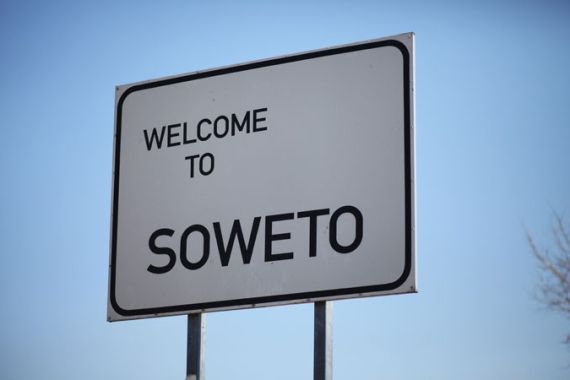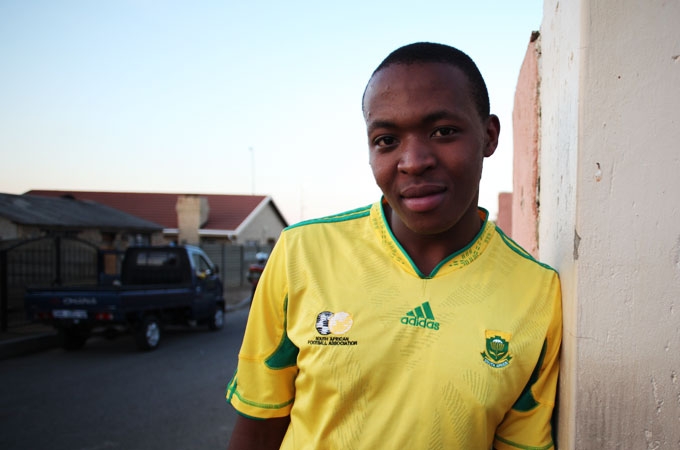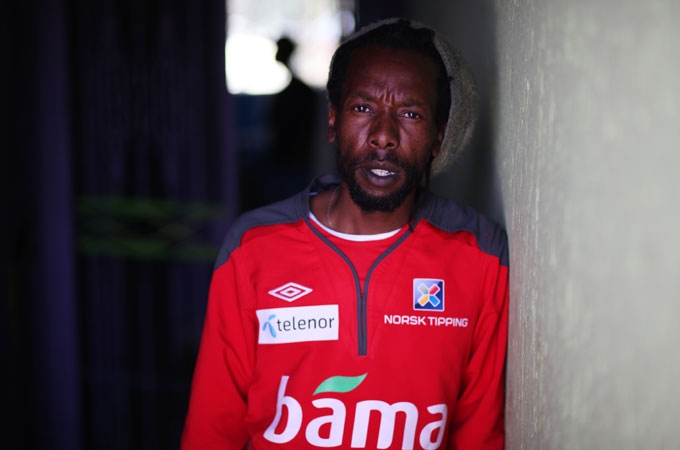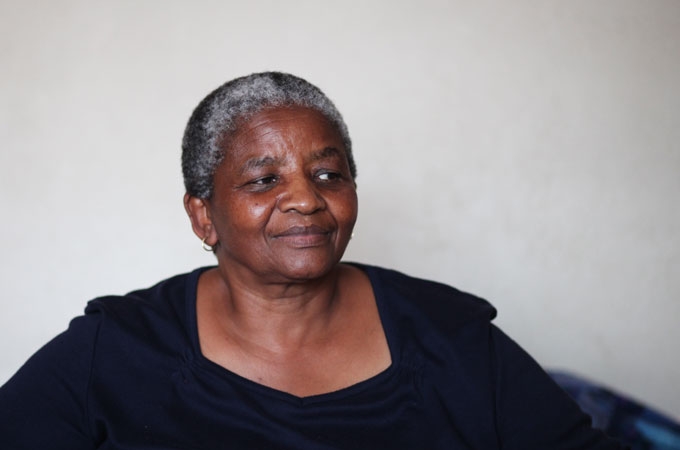Post-apartheid Soweto: The struggle continues
Black South Africans from an area that once symbolised resistance to apartheid talk about where their community is now.

“Our people need proper housing, not ghettos like Soweto.”
These were the words of Nelson Mandela to tens of thousands at Soweto’s Soccer City Stadium just one day after his release from 27 years behind bars in 1990.
Soweto, whose name is taken from the first two letters of “South Western Townships”, was known as the capital of black South Africa.
Originally established for labourers in western Johannesburg’s mines in the late 19th century, it became home to black families forcibly removed from areas around Johannesburg and other parts of the country. Anti-apartheid leaders like Mandela, who celebrated his 94th birthday on Wednesday, lived in Soweto while not in prison.
Today, 18 years after the racist system of governance was brought to an end, Soweto has become a microcosm of the prosperity, poverty and everything in between experienced by the black population of today’s South Africa.
“It’s very exciting growing up here,” said 22-year-old Linda Dludla when we met at a neighbourhood butcher shop that doubles as a bar on weekends near his home in Soweto’s Senaoane township. “I was born at a time when a new system was being introduced.”
 |
| ‘I was born at a time when a new system was being introduced,’ said Linda Dludla [Matthew Cassel/Al Jazeera] |
Dludla is part of the first generation of blacks to grow up in the early 1990s, when the reconciliation process began and the country transitioned to democracy.
We sat on the park benches outside eating freshly grilled lamb chops, while shouting over the loud locally produced Kwaito tracks that combine house music with more traditional African sounds.
Dludla told me that while HIV, crime, drugs and other issues still plague the community, the government is making efforts by creating jobs. “People feel safer,” he said.
Dludla, who said he supported the views of the governing African National Congress (ANC) party, to which Mandela belongs to spoke with pride about being employed as a financial adviser straight out of college.
He speaks comfortably in English, as does nearly everyone in Soweto, in addition to at least two or three native African languages like Zulu and Xhosa.
It was when the apartheid government tried to force Afrikaans into the education system that Sowetan students took to the streets in 1976, in what would later be known as one of the most important events in the struggle against the racist system.
Dludla believes it was those struggles of the generations before him that won blacks their freedom. But for him and many others who are part of a burgeoning black middle class, there are other issues facing Sowetans and black South Africans in general.
“Apartheid was not only an [oppressive political] structure, but a mental breakdown on people here. It made them feel less.”
These days, Dludla said, “the government is doing what it can, but we need to meet them half way”.
Black ‘prosperity’
In the nearby Kliptown Township, a passenger train runs adjacent to the spacious Water Sisulu Square.
The square, named after Mandela’s comrade, also an anti-apartheid activist, was created to commemorate the signing of the 1955 Freedom Charter, promoting the ideas of non-racialism and democracy, by the ANC and other opposition groups. Much of the 1996 constitution, which is considered one of the world’s most liberal, resembled the demands in the Freedom Charter.
“Our country will never be prosperous or free until all our people live in brotherhood, enjoying equal rights and opportunities,” reads one of the charter’s main declarations.
However, just opposite the tracks some 100 metres away are rickety, one-room homes with roofs made from corrugated zinc.
Inside the narrow alleyways where children run shoeless lives 41-year-old Bob Nameng, the founder of Soweto Kliptown Youth (SKY). With long dreadlocks tucked into a cap and a silver cross hanging from his neck, Nameng spoke about growing up on the streets after losing both his parents as a child. He said that had he not met a woman in Kliptown named Mama Eva, he would have remained on the streets.
“She was a mother figure for this whole community, like our Mother Teresa. She gave me a lot, and the only way that I can show her I’m grateful is by the work that I’m doing,” Nameng said.
SKY provides shelter to more than 70 black children from impoverished communities in and around Johannesburg. Nameng said he prefers to avoid the term “orphanage”, because of the stigma that comes with it. He doesn’t want the young people to feel self-pity.
Nameng listed a number of difficulties that Kliptown and other poor Sowetan communities face, and said the government is making little effort to fix them. “The situation is getting worse and worse,” he said.
In communities like Soweto, economic development has transformed the area and overshadowed the extreme poverty. The Maponya Mall, which was opened at a ceremony featuring Mandela and other former activists in 2007, the most striking visible representation of this economic growth.
With shops like McDonalds, KFC, Timberland and Levi’s, there are few local products at the Maponya Mall aside from the shoppers and a statue at its entrance commemorating the killing of 13-year-old Hector Pieterson, the first casualty of the 1976 uprising.
 |
| ‘I feel [the Maponya Mall is] a monster, it’s swallowed so many small businesses,’ said Bob Nameng [Matthew Cassel/Al Jazeera] |
The mall has received widespread praise as the first of its kind in an area like Soweto, but Nameng isn’t excited. “I feel it’s a monster, it’s swallowed so many small businesses. It’s deprived so many poor women and youth a chance to be able to put bread on their table.”
He motions to the passing train, saying that most of the poor people from the area now have to travel miles into Johannesburg to find affordable goods that are no longer available in Soweto.
Much of the overcrowding in the townships came during the 1950s, when the apartheid government began implementing the Group Areas Act, transferring non-whites away from areas reserved for whites. Nameng’s family was from a racially and culturally diverse area called Sophiatown and was moved to the Meadowlands Township along with thousands of others.
Nameng said that today, the blame is unfairly being placed on the youth for the problems still existing in communities like Soweto. “Everywhere you go young people are being blamed,” he said. “But in this country I don’t remember a time when youth were given the necessities of life, especially the black youth. There was no compensation after all what has happened in the country.”
No reparations were given to black people after apartheid came to an end. Nameng, like many blacks in South Africa, have grown disheartened by the post-apartheid era as most of the country’s land and wealth has remained in the hands of the white minority.
“At first we were complaining about the white government, which was the oppressor. Fine, so we’ve got a black government now in power. What [now]? It’s the same old boring song,” Nameng said.
‘Night is out of bounds’
In Dobsonville, another Soweto township, children blow bubbles and ride bikes past the gated homes of what could easily be an American suburb. It’s the weekend and residents hang out in their front yards, some enjoying an icy drink on the warm autumn day, and like nearly everywhere in Soweto on the weekend, the beat of Kwaito and other music resonates somewhere in the background.
It’s a joyous attitude in the neighbourhood as the sun slowly disappears behind Johannesburg’s hills.
“For my grandchildren, night is out of bounds,” said 65-year-old Gloria Majova. “At 6pm I want them home and inside the house.”
Majova sits propped up with her two arms on either side of the chair. She speaks passionately, often raising her voice and straightening her back when she talks about protecting her family and how the community struggled against apartheid.
She spoke about raising her kids during apartheid when one of the biggest threats was the police. “When they were around, you could run into any house and you knew you were protected. It used to be like that.”
During the transition to democracy, Majova told me about how Sowetan neighbourhoods formed street committees. “During that time there was almost zero crime,” Majova said. “It lasted for a number of years. The jail in the Eastern Cape, they had to turn into a crafts centre.
“But now [crime] is escalating again. I don’t think it’s safe anymore in South Africa.”
 |
| ‘We don’t know who is who now,’ said Gloria Majova [Matthew Cassel/Al Jazeera] |
Crime, drug use, HIV and rape continue to be real fears for communities across the country, and especially in densely populated areas like Soweto.
Majova told me about one of her grandsons whom she was surprised to discover was a drug addict. “How he got them, I don’t know. But when I opened my eyes he was in jail already.” When asked what was causing the crime, Majova said she wasn’t sure. “But some would say too much freedom, some would say the foreign people.”
She pointed to her neighbours, who have created small spaces to rent out for family or others. “We don’t know who is who now.”
During apartheid the community would take care of itself, Majova said. “When the police would come in [the neighbourhood] while the children were running around the neighbours would give them [girls’] dresses if they were a boy… to confuse the police,” Majova said.
Now, Majova said she counts on the police to protect the community.
‘Live for tomorrow’
At a typical Friday night street party in the Orlando East township of Soweto, men and women mingled over drinks as some danced under the autumn evening’s light rain. Then, out of nowhere, five police trucks appeared from different directions. More than 10 officers jumped out with their automatic rifles drawn at the partygoers.
Some people fled as others raised their arms to show that they were unarmed and unthreatening. The police made their way through the crowd and grabbed a young man who appeared to have been wounded in his leg and ordered him into the back of one of the trucks before speeding off.
As the music continued, a man raised his drink and shouted to me, “Welcome to the hood!” No one seemed to know who the young man was or why he had been taken away, but one person speculated that he was a “tsotsi” (thug) and had been involved in a shootout with police, judging by the wound on his leg.
While most Sowetans seemed happy with the increased police presence, people like Nameng said it was only putting a band-aid on the large problems. “Freedom is something new to us. It means different things to different people. We should work harder and make sure education is number one,” Nameng said.
“Then that means we don’t live for today, we live for tomorrow.”
Follow Matthew Cassel on Twitter: @justimage